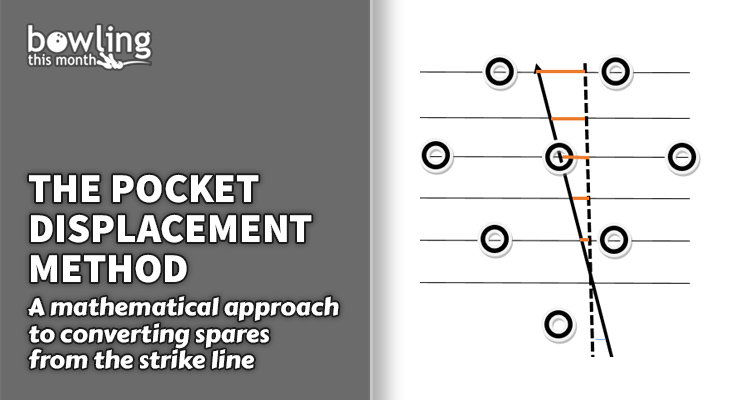Article Contents
- 1. Setting the stage
- 1.1. Calculation of pin deck row front-to-back positions
- 1.2. Calculation of side-to-side ball movement, based on pin contact row and ball entry...
- 1.3. Calculation of bowling ball’s width in boards
- 2. The Pocket Displacement Method
- 2.1. Step one: Determine the contact point on the pin
- 2.2. Step two: Decide on the contact point of the ball
- 2.3. Step three: Calculate the ball center board
- 2.4. Step four: Calculate the ball center side-to-side displacement from the pocket
- 2.5. Step five: Calculate side-to-side ball movement based on entry angle and contact...
- 2.6. Step six: Calculate the overall ball center shift from the pocket
- 3. Calculation practice
- 3.1. The 2/8 spare conversion (righthander)
- 3.2. The 3/6/10 spare conversion (righthander)
- 3.3. The 8 pin spare conversion (righthander)
- 4. Adjusting with the move
- 5. Limitations: ball-side spares on short patterns; playing extreme outside lines
- 6. Customizing for downlane miss tendencies
- 7. Closing remarks
Note: This article is only available to Bowling This Month subscribers.
As you read this, summer is quickly approaching. If you want to improve, summer affords you a check-in opportunity for reflection and evaluation. It is the perfect time to take stock of your current game, assessing its strengths and weaknesses, while also branching out to refine or add new methods and approaches that will help you improve your performance in the upcoming season.
One of the many areas you can refine this summer is your spare game. This article introduces a new option for certain spares called the Pocket Displacement Method, which uses precise mathematical moves off of your strike line for your spare attempts.
The value of this approach to spare shooting is that the moves are calculated relative to the strike line. Such a system provides an opportunity to not only convert certain spares at a higher rate, but to also see another shot near the current strike line. Moreover, if a strike line adjustment is warranted, this method allows a strike line move prior to making the mathematical move for that specific spare, allowing you to test the ball motion of the new line. This creates an opportunity to confirm that the strike line move is appropriate, while also providing insight into whether a ball change might be needed on subsequent strike deliveries.
A process such as this yields significantly more trust and confidence in your next strike shot. Confirmation of the decision’s validity is determined by observing whether the ball on the spare attempt makes contact at the desired spot on the intended pin after making the appropriate calculated move for the spare. If the ball motion is more or less than expected on the spare attempt, you can then make another adjustment before ...
Already a premium member? Click here to log in.


 (Only
(Only 